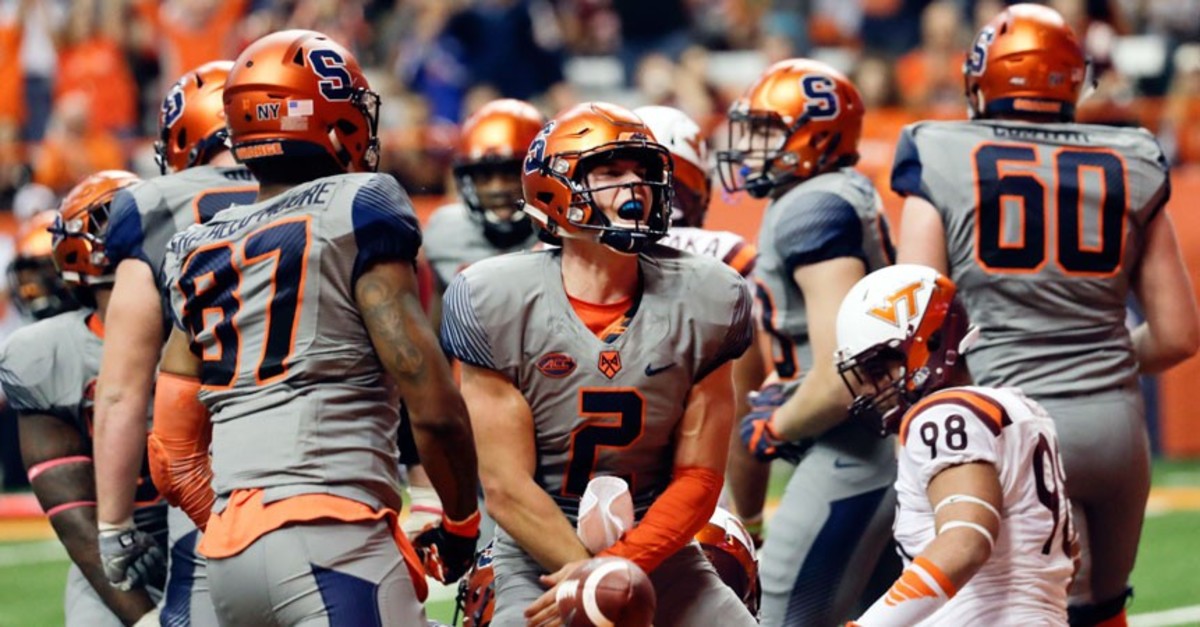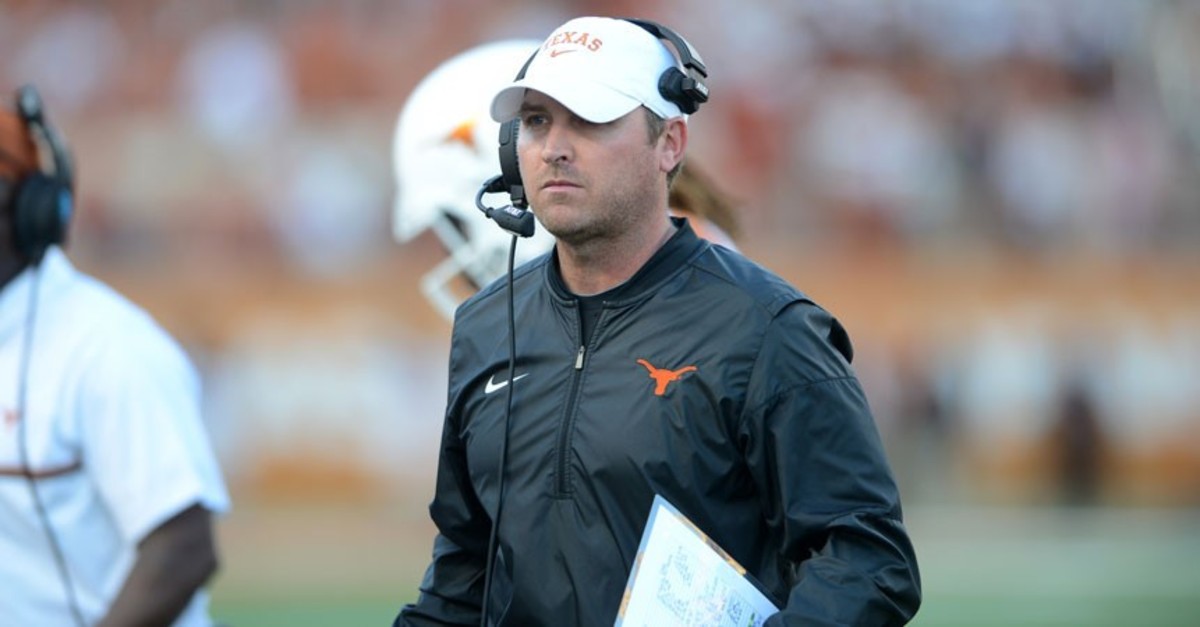The System is the Star: While Art Briles idles, his offense is changing college football. A key component? Secrecy.

[video: 13724758]
This story appears in the Oct. 24-31, 2016, issue of Sports Illustrated. Subscribe to the magazine here.
Art Briles, the 60-year-old architect of an improbable football rise at Baylor, has spent the 2016 season in exile. Baylor relieved Briles of his coaching duties on May 26 after Pepper Hamilton, a law firm hired by the school to investigate the program, found that "Baylor failed to take appropriate action to respond to reports of sexual assault and dating violence reportedly committed by football players. The choices made by football staff and athletics leadership, in some instances, posed a risk to campus safety and the integrity of the university." (Athletic director Ian McCaw was put on probation and later resigned, and university president Ken Starr was demoted to chancellor and also later resigned.)
While Briles has been removed from the scene, the instrument of his success, the Baylor offense, is more visible than ever. The system he devised as a coach at Stephenville (Texas) High and at the University of Houston calls for splitting the receivers as wide as possible and running at hyper tempo, a devastating combination of spread and speed that leaves defenses and fans gasping. In each of Briles's last five years at Baylor, the Bears finished in the top five in the country in scoring. They won two Big 12 titles and emerged as a national title contender at a place that had long been a football backwater. "It's literally unstoppable if you have the right pieces," says Bowling Green coach Mike Jinks, who faced the offense as an assistant at Texas Tech.
Yet for all the yards gained and points scored, the Baylor system had not spread far beyond Waco. That was intentional. Briles had made secrecy a priority. There's no written playbook: Players learn from video and during practice. Briles won't talk publicly about the offense's intricacies, and unlike most of his peers, he rarely appears at off-season coaching clinics. Cincinnati coach Tommy Tuberville calls the system "very, very simple," but even in a copycat business, few have been able to mimic Briles's success.
This season, though, the offense has gone national. Baylor, Syracuse, Texas and Tulsa each have a Briles disciple running the scheme. And like Briles, each of those coaches is dedicated to keeping the finer points under wraps. "I mean there's some things you just don't share," says Texas offensive coordinator Sterlin Gilbert, who learned the offense as a graduate assistant at Houston in 2005. "Go to Coca-Cola and try to get that recipe," he says. "There's some things in life that have success, and the reason it has been successful and stays that way is because minimal information has been given out about it."
True, but if the stats and wins continue to mount, there will be more efforts to unravel the secret.
***
It's a muggy August morning as Syracuse coach Dino Babers stands before his team in its practice bubble. Rapper Meek Mill provides the soundtrack for the synchronized symphony of a 90-minute session that feels like one long wind sprint. There's no wasted motion and no players standing around, and the first break comes about two-thirds of the way through.
"The pace you are operating at," Babers tells the team, "you're never going to feel that pace in a game. O.K.? There's no team faster than us."
Babers, 55, is in his first season at Syracuse after two years as coach at Eastern Illinois (19–7) and another two at Bowling Green (18–9). Those jobs followed four years as an offensive assistant at Baylor. The Orange went 4–8 last year, running an option-based offense that was one of the country's most stagnant—99th in yards per play (4.9), 118th in yards per game (310.5) and 127th in plays per game (63.0). Babers has blown that up.
In its place he has instilled a culture of absolutes and efficiency. Staff and players are not allowed to use the phrase "pretty good." Something is either good or bad. Babers lives 2.6 miles and two traffic lights from his office, which means he can get to his desk in less than five minutes. He politely declines to dive into specifics of the offense, deflecting questions with a big smile and a joke. And he tells an in-house crew filming promotional videos, "Make sure I see what goes on before you show that. No one else in the country does that drill."

Mike Groll/AP
The players speed through reps—the system is based on repetition—and strength coach Sean Edinger later points out that an hour-and-a-half practice will include 155 plays. "In a lot of places, that's a little more than two games' worth," he says. "[Other teams] just don't do that."
Well, most other teams. Two years ago Tulsa went 2–10 and finished 89th nationally in scoring. Then Philip Montgomery, 44, left his job as Baylor's offensive coordinator to take over. In Montgomery's first season the Golden Hurricane improved their point total by 12.5 per game, finished 18th in scoring and reached the Independence Bowl. "In the past at Tulsa, we had a package where we did some spread stuff and went fast," says senior quarterback Dane Evans. "Now it's our whole offense. We run our two-minute offense for two hours a day."
When Evans hears heavy panting across the line, he knows he's got the defense where he wants them. "I don't want to say it's physically impossible to go hard every play," he says of opponents, but "it's really about getting people tired and going after them."
Montgomery is bothered by those who deride the system as simple. He says it's streamlined by design and laughs at NFL teams that have play calls that take four sentences. "And that's to run a damn counter," he says. He points to one of the Baylor offense's guiding principles: "Don't make something easy hard."
In 2014 quarterback Jimmy Garoppolo went from Eastern Illinois—under Babers—to the NFL, a second-round pick of the Patriots. As a senior, Garoppolo threw for 5,050 yards and 53 touchdowns and completed 66% of his passes while leading the Panthers to a 12–2 record and the quarterfinals of the FCS playoff. Did Garoppolo make the offense or the offense make Garoppolo? "The offense forced everyone to look at him," Babers says. "Then looking at him, there was no doubt what he could become. We both needed each other. But if you're asking who got the most out of it, I think he got the most out of it."
STAPLES: Analyzing the schedules of each remaining undefeated team; Punt, Pass & Pork
In each of Babers's first two stops his teams showed marked improvement in the second year, going a combined 22–5. In year two at Bowling Green the Falcons blew out Maryland at Byrd Stadium, 48–27; won at Purdue 35–28; and blasted Northern Illinois 34–14 to win the MAC title. This year the Syracuse offense is averaging 159.0 more yards per game and an astonishing 25.2 more plays per game, moving to No. 3 nationally from second to last. They have already tied or broken 16 school records, and Amba Etta-Tawo, a graduate transfer from Maryland, is second in the nation in receiving. He's already almost tripled his number of catches (to 56 from 20) and quadrupled his receiving yards (930 from 216) from 2015.
The system has given the program a vision and an identity, something it has lacked since the Donovan McNabb era of the late 1990s. It has also helped recruiting. Four-star 2017 quarterback Tommy DeVito, from Don Bosco Prep in Ramsey, N.J., is considered the best quarterback prospect the Orange have landed in years.

John Rivera/Icon Sportswire via Getty Images
The same is true of Texas, which floundered offensively during coach Charlie Strong's first two years. That's why last winter Strong, athletic director Mike Perrin and university president Greg Fenves made a road trip to recruit Gilbert, 38, who as recently as 2011 was coaching high school ball outside Waco. He learned the Baylor offense as a graduate assistant at Houston in 2005 and, after his high school stint, worked for Babers at Eastern Illinois and Bowling Green before spending 2015 as Montgomery's offensive coordinator at Tulsa. Now in Austin, he has the Longhorns scoring 38.7 points per game, up from 26.4, and they have an identity that has resonated with recruits and fans.
This is not to say that all is perfect among teams running the Baylor system. Syracuse (3–4, after upsetting No. 17 Virginia Tech) and Texas (3–3) have struggled on defense. The Orange are allowing 37.7 points per game, while the Longhorns are giving up 34.0. One of the offense's weaknesses is the pressure it puts on its own defense because of the large number of possessions it forces. But Babers is not going to slow anything down. He wants to highlight the offense. "We have to be able to show our product," Babers says. "Show our brand."
Of course year one was always going to be about building a foundation, but will Syracuse be able to flip the switch in year two? Says Edinger, "It has never not worked."
Gilbert, for one, hopes that remains true. With his West Texas twang and penchant for trucker caps and Cowboy boots, he's at home in Austin, but the losses have brought calls for Strong's head. If Gilbert wants to help his boss make the case that the offense can eventually carry the team, he doesn't need to look far for hope.
Tulsa is 4–2, its only losses a 48–3 drubbing by No. 2 Ohio State and a narrow loss to No. 11 Houston, 38–31, both on the road, while back at the mother ship—Baylor—Briles's offense continues to thrive without Briles. Or at least without Art Briles. The Bears, down to 72 players after defections, dismissals, transfers and injuries, are 6–0, ranked ninth and averaging 41.4 points. They're led by a 33-year-old offensive coordinator who ran the Baylor offense as a quarter back at Stephenville and at Houston. Kendal Briles is proving that both he and the offense can flourish without his dad around.
Of course, he may not be the only Briles coaching for long. One of the most intriguing dramas of the final weeks of the season will be whether Briles will return to the sidelines in 2017. LSU has dismissed its coach, and other top-tier programs are bound to follow suit. Only one can land Houston's Tom Herman, this season's most coveted candidate. Will some athletic director decide that Briles's record of success is worth the inevitable backlash that would come with hiring him?
The coming months will tell.
